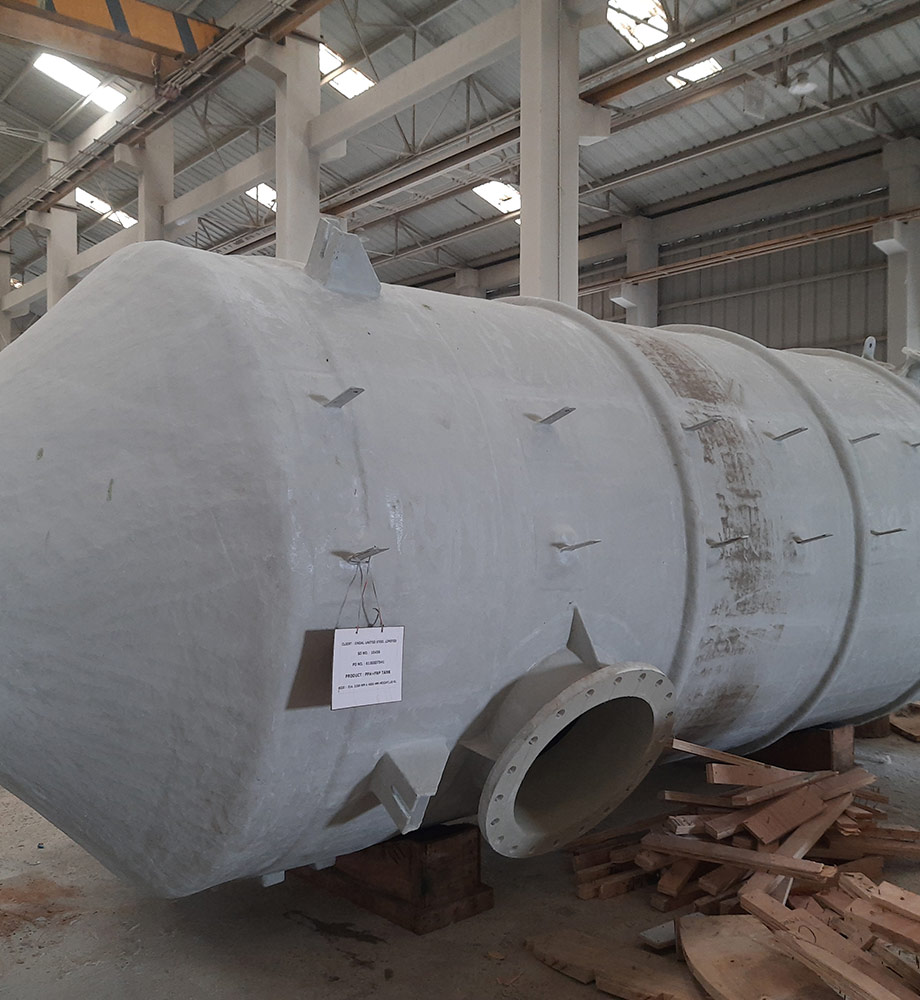Key Features
- Dual Construction: FRP vessel reinforced by a continuous weld-seam thermoplastic liner.
- Material Selection: Liner material chosen based on chemical compatibility; PP and PVC-U are common for acids, alkalis, oxidants.
- High Bond Strength: Special surface treatment ensures the liner is tightly bonded to the FRP.
- Full Certification: Designed per ASME RTP-1 (FRP) and EN 12573/EN 13121 (thermoplastic).
Benefits
- Ultimate Corrosion Resistance: Handles pH extremes and oxidizing chemicals that would attack pure FRP or metal.
- Extended Service Life: Eliminates liner degradation (compared to painted steel), yielding long, maintenance-free operation.
- Safety: Eliminates cross-contamination; tight liner seals prevent leaks even with aggressive contents.
Applications
Storage and settlement of aggressive chemicals in pickling, plating and tanning effluents; ferric chloride dosing basins; secondary containment of chemical processing.
Technical Specifications
Typical liner thickness 5–10 mm (PP), FRP laminate thickness ~6–12 mm. Tanks can be vertical or horizontal, insulated if needed. Certified design codes (e.g. ASME RTP-1 D-120, EN 13121) guide wall thickness and reinforcement.
Unique Selling Points
Our tanks use marine-grade vinyl ester or urethane-modified vinyl ester in the FRP shell for added durability, and we weld thermoplastic liners to achieve a truly seamless inner surface. This “dual-laminate” approach outperforms conventional FRP or steel.

